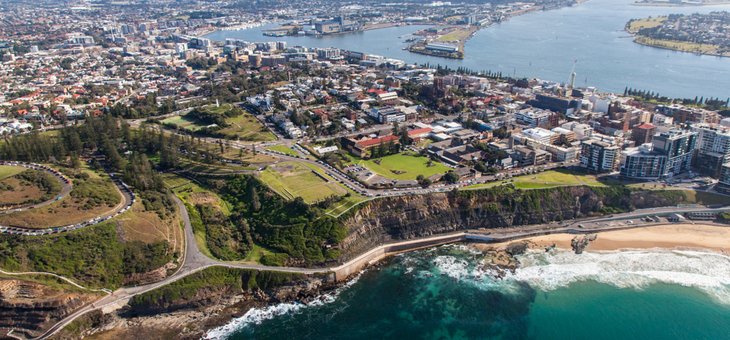The ability for more people to work remotely during the COVID-19 pandemic has increased interest in remote locations, making the prospect of a tree change or sea change more attractive.
RiskWise Property Research chief executive Doron Peleg said the changed working arrangements brought about by the COVID-19 pandemic were likely to last beyond the stage when life returned to normal and this had important implications for the property market.
“Australians have had a taste of working from home over the last few months, and are now able to continue to work remotely, and it’s these buyers who are now seeking lifestyle properties and avoiding higher density locations,” Mr Peleg said.
“COVID-19 had helped strengthen ‘work from home’ opportunities, meaning owner-occupiers can take advantage of ‘lifestyle’ prospects instead of being tied to employment hubs.
“Before COVID-19 hit, there was already a strong trend of sea and tree-change homebuyers looking for the best of all worlds – lifestyle, accessibility to employment hubs and affordable housing.
“These include areas of southeast Queensland such as the Sunshine Coast and the Gold Coast, just over the NSW border in Byron Bay and further south on the Central Coast, in areas such as North Avoca, Terrigal and Wamberal.
“Then there’s also sought-after locations such as the Hunter Valley, Wollongong and the South Coast, and in Victoria, the Mornington Peninsula, Geelong, and Ballarat.”
The popularity of some of these suburbs saw them feature highly in the top 10 suburbs for people to retire to towards the end of last year.
Mr Peleg said beachside suburbs especially outperformed the market as they offered fantastic lifestyle opportunities.
Did that mean that sea-change properties would deliver better capital growth outcomes over tree-change properties?
According to the RiskWise research, yes. And quite significantly so.
The research showed that over the past five years, sea-change areas delivered price growth around 36 per cent while tree-change areas delivered growth at around half that level (18 per cent).
Mr Peleg said part of this was due to the popularity of beachside areas, which had significantly increased in the past few years.
“However, tree-change areas in general are significantly more affordable with a median price of $410,849, while sea change tends to come with a higher median price tag, at $742,528,” Mr Peleg said.
Kingscliff delivered the strongest price growth of 61 per cent over the past five years with Noosa Heads and Lennox Head the two next best performers at 49 per cent and 47 per cent respectively.
Buying in those areas already comes with a hefty price tag, though, making it much more difficult to take advantage of this growth.
Birregurra in Victoria was the top tree-change area for capital growth over a five-year period (54 per cent) with Evandale in Tasmania next best with 40 per cent growth.
“It’s clear from these figures that sea change beats tree change hands down when it comes to solid and consistent capital growth,” Mr Peleg said.
“It’s simply a matter of supply and demand. The supply of beachside properties in warm areas are way below the demand.
“On the other hand, the availability of stock tree-change areas is potentially much higher. As we all know Australia is a big country with many lovely regional areas to choose from.”
“This largely reflects the amazing lifestyle options on offer along our coastlines, which appeal to so many people, and often there is relatively speaking good value for money to be found, especially for those migrating from capital cities such as Sydney and Melbourne.”
Buyers agent Pete Wargent from buyersbuyers.com.au said that while there had been an increase in demand for both coastal and hinterland regions, the demand was certainly strongest from those looking to be closer to the beach.
“We’ve clearly seen that both coastal and hinterland areas have seen a significant increase in buyer interest, and it’s clearly picked up, even since February and March,” Mr Wargent said. “But not all areas have experienced the same consistent demand over time.
“For property buyers with a medium-term outlook, it’s mostly been the coastal lifestyle locations around Australia which buyers keep on coming back to.”
Where is your ideal retirement location? Would you prefer a tree change or a sea change? Do you still favour living close to a capital city? What is important to you in a retirement location?
If you enjoy our content, don’t keep it to yourself. Share our free eNews with your friends and encourage them to sign up.
Related articles:
https://www.yourlifechoices.com.au/finance/property/granny-flat-tax-cut
https://www.yourlifechoices.com.au/government/centrelink/am-i-a-nonhomeowner
https://www.yourlifechoices.com.au/finance/property/how-to-pass-your-assets-on-to-your-kids

